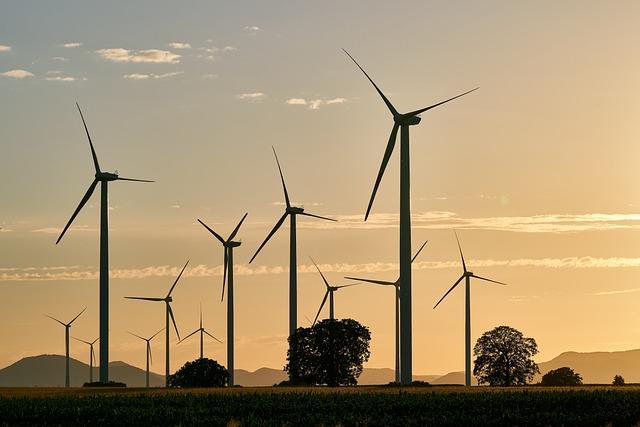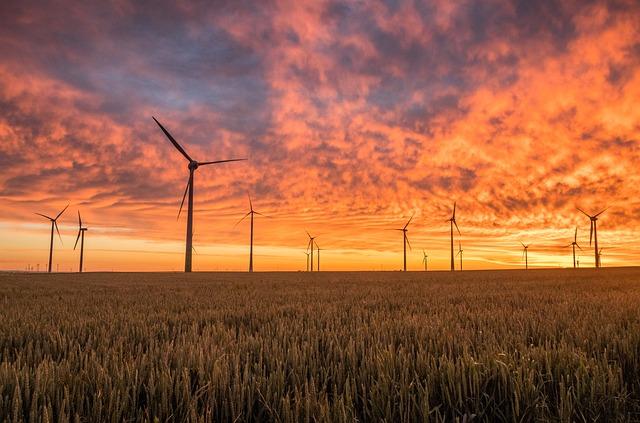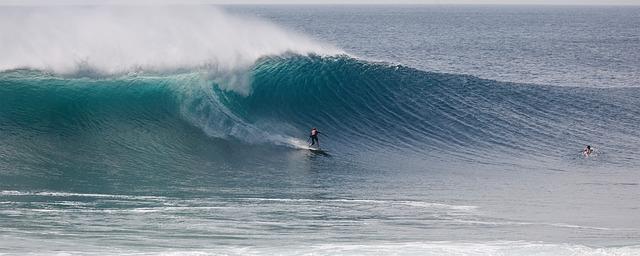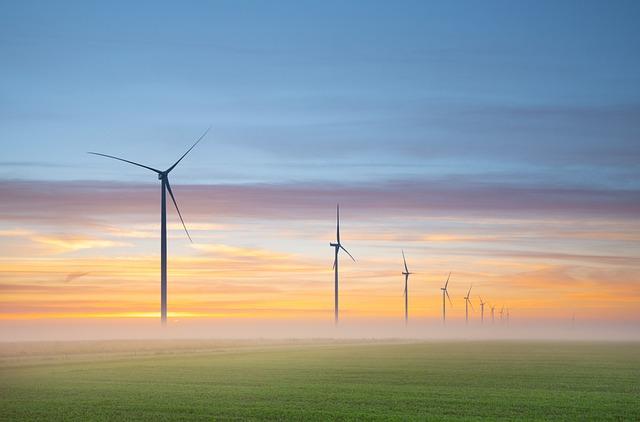- Introduction
- How Wave Energy Works
- Types of Wave Energy Converters
- Benefits of Wave Energy
- Challenges in Wave Energy Harvesting
- Conclusion
- FAQs
- References
Introduction
Wave energy is a rapidly growing source of renewable energy that harnesses the power of ocean waves to generate electricity. In this article, we’ll break down the process of wave energy harvesting, the types of devices used, and its potential benefits to society. Additionally, we’ll discuss the challenges that come with harnessing this natural resource and answer some frequently asked questions about the technology.
In the next sections, we will first explore how wave energy works, followed by the types of wave energy converters. We’ll also focus on the benefits of wave energy, both environmentally and socially. Finally, we will look at the challenges that the industry still faces and how they might be addressed in the future.
How Wave Energy Works

(Image: Pixabay/@neelam279)
Wave energy works by capturing the movement of ocean waves and converting it into mechanical energy, which can then be turned into electrical energy. Ocean waves are created by wind passing over the surface of the sea. As these waves form, they contain kinetic energy, which can be harnessed by special devices located either near the shoreline or further out at sea.
The energy captured from ocean waves generally comes in two forms: the horizontal motion (forward and backward) and the vertical motion (up and down) of the waves. Specialized wave energy converters (WECs) capture this motion and convert it into mechanical energy, which is fed into a generator to produce electricity.
There are three major components in any wave energy harvesting system. First, there's the energy capture device, where the waves' force is initially harnessed. This is followed by the conversion system, wherein this mechanical energy is converted to electrical energy. Lastly, the transmission system sends the generated electricity to the grid.
Modern systems have been developed to optimize the efficiency of wave energy harvesting, and engineers continue to explore new ways to access this abundant source of renewable energy. Since the ocean covers over 70% of the planet, capturing wave energy could provide a tremendous boost to alternative energy.
Types of Wave Energy Converters

(Image: Pixabay/@distelAPPArath)
Several different types of wave energy converters (WECs) have been devised to handle the challenging marine environment while optimizing energy capture. These devices are positioned in different spatial arrangements with respect to the coast: shoreline, nearshore, and deep-sea locations. Let’s take a look at the most predominant WEC designs:
1. Point Absorbers
Point absorber devices work by bobbing up and down in the water as waves pass by. Typically, these devices float on the ocean surface, anchored by tether lines to the seabed. The wave motion moves these buoys vertically, and internal mechanisms convert that motion into electricity. These are often favored due to their simplicity and ability to function in various sea conditions.
2. Oscillating Water Columns
An Oscillating Water Column (OWC) consists of a partially submerged structure that captures air trapped above the water column. As waves flow in, they force air through a turbine to generate electricity. When the wave recedes, air flows back through the turbine, generating additional energy. This bidirectional airflow through the turbine increases the efficiency of energy production but requires careful design to handle varying sea levels.
3. Attenuators
Attenuators are long, jointed structures placed parallel to the direction of incoming waves. They bend and flex as waves pass beneath them. The motion between different segments drives hydraulic or mechanical systems that generate power. Their elongated designs make them well-suited for capturing the energy of longer-period, lower-frequency waves.
4. Overtopping Devices
An overtopping device resembles a barrier that sits above sea level and captures incoming waves as they crash over it. These waves then fill a reservoir behind the device. The stored water flows back into the sea through turbines, harnessing gravitational energy in much the same way as a hydroelectric dam works.
Benefits of Wave Energy

(Image: Pixabay/@Pexels)
Wave energy offers many environmental, societal, and economic advantages that make it a promising solution for the world's growing energy needs. Below are some of the most significant benefits:
1. Renewable and Sustainable
Unlike fossil fuel-based energy sources, wave energy is entirely renewable. The waves continue to form due to wind generated by the sun’s heating of the Earth’s atmosphere, which means that this energy source will not run out in the foreseeable future. Additionally, unlike solar or wind power, waves can generate energy around the clock, making this a more constant and reliable source.
2. Minimal Environmental Impact
Wave energy harvesting has a relatively low environmental footprint compared to fossil fuel extraction and consumption. Most wave energy converters are placed far offshore or nearshore, reducing the visual burden on coastal landscapes and decreasing potential conflicts with recreational activities. While there may be some effects on local marine life, the impact is generally considered smaller than other energy-generating methods such as large-scale hydropower dams.
3. Reducing Carbon Emissions
One of the most crucial benefits of wave energy is its potential to significantly cut greenhouse gas emissions. By using wave energy to electrify our homes and industries, we reduce our dependency on carbon-heavy sources of energy like coal, oil, and natural gas.
4. Job Creation and Local Economic Growth
Building and maintaining wave energy installations can create jobs in engineering, construction, and maintenance. Additionally, it supports the growth of greener economies, with regions located near oceans standing to benefit especially from the local production and usage of wave-generated power.
Challenges in Wave Energy Harvesting

(Image: Pixabay/@Kanenori)
Despite its potential, several challenges complicate the widespread adoption of wave energy harvesting. These obstacles are technical, economic, and regulatory, and understanding them is key to finding solutions.
1. High Initial Capital Costs
The cost of developing and installing wave energy facilities remains one of the most significant hurdles. Building durable, seaworthy structures that can withstand rough marine environments is expensive, particularly when compared to more mature renewable technologies such as wind or solar. In order for wave energy to compete in the market, there must be lower costs and greater financial incentives for investment.
2. Marine Environment Hazards
The ocean is a harsh place, with corrosive saltwater, extreme weather conditions, and powerful waves that continually batter equipment. Wave energy converters must be able to endure these elements with minimal maintenance to ensure functionality over their lifespan. This adds complexity to the design and implementation of wave energy systems.
3. Grid Integration Issues
Much of the world’s power grids were designed for steady sources of power, like fossil fuel plants, and integrating intermittent sources like wave energy can be a technical challenge. Reliable transmission infrastructure must be in place to channel energy into the grid as waves fluctuate. Adequate storage and backup measures are needed to avoid interruptions in supply during periods of calm seas.
4. Regulatory and Permitting Challenges
Wave energy development often requires navigating complex regulatory frameworks, especially since many projects involve both coastal and offshore zones. Bring in stakeholder engagement, environmental monitoring, and compliance with national and international laws, and the process can delay projects and increase overall costs.
Conclusion
Wave energy harvesting represents an exciting frontier in renewable energy development. Its ability to provide consistent, renewable power to coastal areas makes it a highly attractive option as countries transition toward green energy. However, the technology faces technical, operational, and regulatory challenges that must be overcome before it becomes widespread. Through continued innovation and policy support, wave energy may soon play a major role in the global energy mix.
FAQs
What is wave energy harvesting?
Wave energy harvesting involves capturing the kinetic energy from ocean waves and converting it into usable electricity.
How does wave energy compare to other renewable sources like solar or wind?
Wave energy is more consistent than solar or wind, as waves are produced continuously in some parts of the ocean. However, its technology is less mature, and costs are higher.
What are the main challenges to wave energy adoption?
The main challenges include high initial capital costs, the harshness of the marine environment, integration with existing energy grids, and regulatory hurdles.
Where can wave energy be best utilized?
Coastal areas with strong and consistent wave patterns are ideal for wave energy farms. Examples include parts of Europe, the Pacific Northwest of the USA, and other ocean-facing regions worldwide.

